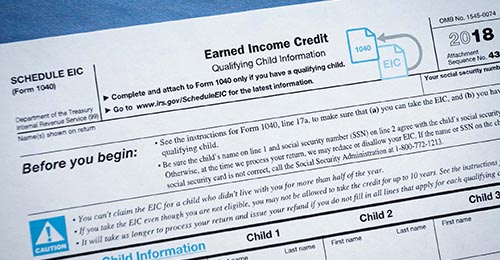New Twist Added to the IRA-to-Charity Provision

Congress Adds More Uses for College Savings Plans (Sec 529 Plans)
March 20, 2020
IRS Letters: Tax Scam or Something You Need to Address?
April 3, 2020Article Highlights
- Qualified Charitable Distributions (QCDs)
- Required Minimum Distribution
- Age Limit Repealed for Traditional IRA Contributions
- Coordination of QCDs and Deducted Traditional IRA Contributions
Ever since 2006, individuals age 70½ or older have been able to transfer up to $100,000 annually from their IRAs to qualified charities. These transfers are referred to as qualified charitable distributions (QCDs), and here is how this provision, if utilized, plays out on a tax return:
- The IRA distribution is excluded from income;
- The distribution counts toward the taxpayer’s required minimum distribution (RMD) for the year; and
- The distribution does NOT count as a charitable contribution.
At first glance, this may not appear to provide a tax benefit. However, by excluding the distribution, a taxpayer with itemized deductions lowers his or her adjusted gross income (AGI), which helps with other tax breaks (or punishments) that are pegged at AGI levels, such as for medical expenses, passive losses, and taxable Social Security income. In addition, non-itemizers essentially receive the benefit of a charitable contribution to offset the IRA distribution.
The age 70½ threshold for QCDs was originally coordinated with the age 70½ requirement to begin taking distributions from qualified employer plans and traditional IRAs known as RMDs.
However, the SECURE Act (Appropriations Act of 2020), effective beginning in 2020, increased the RMD age to 72 but still allows QCDs once the taxpayer reaches age 70½. The act also repealed the age restriction for making traditional IRA contributions beginning in 2020, which means a taxpayer can make traditional IRA contributions and QCDs after reaching age 70½. As a result, Congress included a provision in the act requiring a taxpayer who qualifies to make a QCD to reduce the QCD non-taxable portion by any traditional IRA contribution that is deducted and made after reaching 70½, even if they are not in the same year.
Example #1 – Jack makes a traditional IRA contribution of $7,000 when he is age 71 and another $7,000 contribution at the age of 72. He claims an IRA deduction of $7,000 on his tax return for each year. Then later when he is 74 he makes a QCD in the amount $10,000 to his church’s building fund. Since Jack had made the IRA contributions after age 70½, his QCD must be reduced, but not below zero, by the post-70½ contributions that were deducted, and as a result the $10,000 is taxable. However, he can claim $10,000 to the church building fund as a charitable contribution on Schedule A if he itemizes his deductions.
Example #2 – Bob makes a traditional IRA contribution of $7,000 when he is age 71 and another $7,000 contribution at the age of 72, and deducts the IRA contributions on his returns. Then later when he is 74 he makes a QCD in the amount $20,000 to his church’s building fund. Since Bob had made the deductible IRA contributions after age 70½, for tax reporting his QCD must be reduced by the $14,000. As a result, of the $20,000 QCD, $14,000 is a taxable distribution, $6,000 is nontaxable and Bob can claim a $14,000 charitable contribution.
If you think that this tax provision may affect you and you have questions, please call this office.




